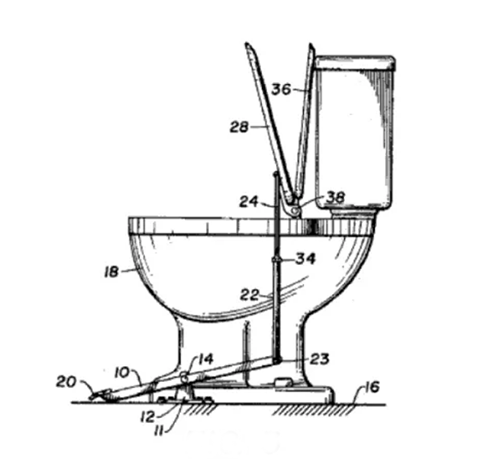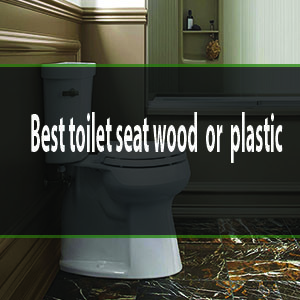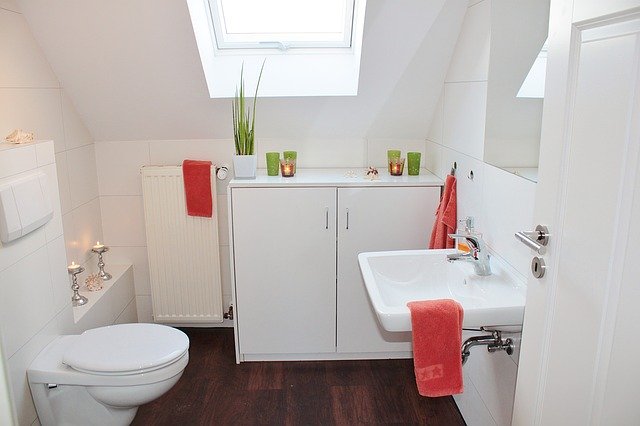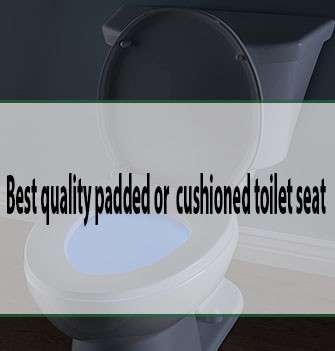Ever wondered about the materials that make up something you use every day but might not often think about? Toilets are an essential part of our lives, yet most of us don’t really know what they’re made of.
Understanding the materials can not only satisfy your curiosity but also help you make informed choices when it’s time to replace or upgrade. Imagine knowing exactly what you’re investing in and how it impacts durability, maintenance, and even your environmental footprint.
Dive into this article to uncover the secrets behind toilet manufacturing and discover how this knowledge can benefit your home and lifestyle. Keep reading, and you’ll never look at a toilet the same way again!
Table of Contents
Porcelain Dominance
Porcelain toilets are very common. They are made from a type of ceramic. This ceramic is fired at a high temperature. This makes it very strong. Porcelain is also non-porous. Water and stains do not seep in. This keeps toilets clean and shiny. Another benefit is its smooth surface. It feels nice and is easy to clean.
Porcelain is a great material for toilets. It is very durable. This means it lasts a long time. Even with heavy use, it doesn’t wear out easily. It is also hygienic. Bacteria cannot easily grow on it. This makes it safe for families. Porcelain is also resistant to scratches. This keeps the toilet looking new for years.
Ceramic Alternatives
Ceramic and porcelain toilets are quite similar. Both are made from clay. Porcelain is a type of ceramic. It is more refined. Porcelain is often whiter and smoother. Ceramic toilets are thicker. They can be less expensive. Porcelain is more durable. It lasts longer and resists chips.
Ceramic toilets can be heavier. They might crack under pressure. Porcelain is usually lighter. It can handle more stress. Cleaning is easier with porcelain. Stains don’t stick as much. Ceramic can be a bit harder to clean.
Choosing between them depends on your needs. Cost, durability, and look all matter. Each type has its pros and cons.
Stainless Steel Options
Stainless steel toilets offer durability and resistance to rust. They are commonly used in public restrooms for their strength. This material ensures long-lasting performance and is easy to clean.
Durability And Strength
Stainless steel toilets are very strong and durable. They can handle a lot of use without breaking. This makes them a popular choice for many places. The material is also resistant to rust. This means it will last a long time. It does not stain easily either.
Cleaning is simple and quick. It keeps the toilet looking nice. Stainless steel is tough. It can handle rough treatment. This is why it is used in many public places.
Common Uses In Public Spaces
Stainless steel toilets are common in public areas. These include airports, train stations, and stadiums. They are also found in schools and prisons. The reason is their strength and long-lasting nature. Many people use these toilets each day. They stay clean and work well.
These toilets save money over time. They do not need to be replaced often. This makes them a smart choice for public use.

Credit: www.homestratosphere.com
Innovative Composite Materials
Composite materials help the planet. They use less natural resources. This helps save trees and water. Some toilets use recycled materials. This means old products get a new life. They help reduce waste. Some materials can break down safely. This helps keep nature clean.
These materials are lightweight and durable. They last for many years. A strong toilet is a smart choice. They resist cracks and chips. This means fewer repairs. They also feel smooth and are easy to clean. Less cleaning means saving time and water. Choosing composites can be a wise decision for the home.
Plastic Toilets
Plastic toilets are very lightweight. This makes them easy to move. They are also cost-effective. Many people can afford them. Plastic toilets are often used in temporary places. They are common at events and camps. Their light weight helps with transport.
Plastic toilets can break easily. They are not very strong. Scratches and marks appear quickly. This can make them look old fast. Some people think they do not look good. They can stain over time. Cleaning them can be tricky. Also, plastic toilets may not last long. They are not the best for long-term use.
Glass And Stone Variants
Luxury and aesthetic appeal are key features of glass and stone toilets. These materials make bathrooms look elegant. Glass toilets shine and sparkle under lights. Stone gives a natural and earthy feel. Both materials are often used in fancy homes or hotels. They catch the eye and feel special. But they are not just about looks. They are also strong and last long.
Practicality concerns exist with these materials. Glass can be slippery when wet. Stone toilets are heavy and need strong floors. Cleaning can be harder too. Both glass and stone may show dirt more easily. Special cleaners might be needed. This adds extra work for cleaning.
Historical Materials
Ancient toilets were made from stones and wood. These were simple. People used them in olden times. China used clay for making toilets. It was durable. The Romans used marble. This was fancy and smooth.
In the past, toilets were basic. They used what was nearby. Wood was common. It was easy to shape. But it didn’t last long. People wanted better materials. They wanted something strong.
Traditional toilets used heavy materials. Stone and wood were popular. They were not perfect. They got dirty fast. People wanted change.
Modern toilets are different. They use ceramics and porcelain. These are easy to clean. They last longer. They look nice too. Plastic is also used. It is light and cheap. Modern materials are better. They are cleaner and more durable.

Credit: janiwrap.com

Credit: www.chinalory.com
Frequently Asked Questions
What Materials Are Toilets Commonly Made Of?
Toilets are commonly made of porcelain, a durable ceramic material. Porcelain is preferred for its non-porous surface, making it hygienic and easy to clean. Some toilets also use vitreous china, a type of porcelain with a glossy finish, enhancing durability and stain resistance.
Are There Eco-friendly Toilet Materials?
Yes, eco-friendly toilets often use recycled materials. Some manufacturers use recycled glass, plastic, and sustainable ceramics. These options reduce environmental impact while maintaining durability and functionality. Eco-friendly toilets help conserve resources and support sustainable living practices.
Why Is Porcelain Used For Toilets?
Porcelain is used for toilets due to its durability and hygiene. Its non-porous surface prevents bacteria buildup and stains. The material is strong, withstands daily use, and is easy to clean. Porcelain’s glossy finish adds aesthetic appeal to bathroom fixtures.
Can Toilets Be Made From Stainless Steel?
Yes, toilets can be made from stainless steel, especially in commercial settings. Stainless steel is robust, vandal-resistant, and easy to maintain. It’s ideal for public restrooms due to its durability and ability to withstand heavy use. The material also offers a modern, sleek appearance.
Conclusion
Toilets come in various materials, each with unique benefits. Ceramic is popular for its durability and easy cleaning. Stainless steel offers strength and a modern look. Plastic is lightweight and budget-friendly. Wood and stone add elegance but require care. Choosing the right material depends on needs and style.
Consider maintenance and cost. Understanding materials helps make informed choices. So, next time you shop for a toilet, know what suits best. This knowledge ensures a smart, lasting purchase. Your bathroom deserves the best fit for comfort and functionality.






